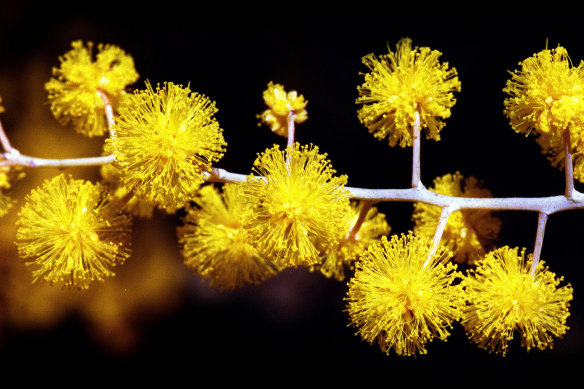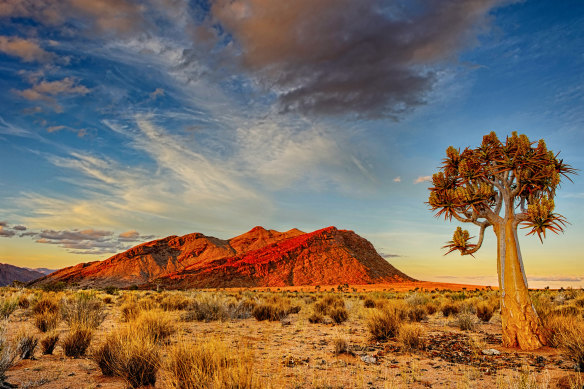This was published 3 months ago
Birds, bees and trees: My guilty winter pleasure
Life moves fast for a wattle. Tiny self-sown ones have started appearing in my garden, and imagining how these young trees will turn into big trees has become one of the pleasures of my winter. I picture them with birds feasting on their flowers and insects living in cracks in their bark. I think of how their roots will fix nitrogen and their branches will cast shade.
I even think of them growing old and dying and all the life they will support then. Birds will perch on them and bats will roost in them. Finally worms, beetles, fungi and microbes will gradually reduce these wattles into food for my soil.

Of all the ways to improve our environment, increasing our tree cover is one of the simplest, writes Megan Backhouse.Credit: Fairfax Photographic
It’s good that I didn’t procrastinate when, almost 10 years ago, I acquired cleared-for-farmland paddocks and immediately set about planting the indigenous trees that produced these ones.
Of all the ways to improve our environment, increasing our tree cover is one of the simplest. Trees protect us from extreme heat, help clean our air, store carbon, slow down rainwater, provide habitat for wildlife and generally make our world a better place to live.
While you can plant trees any time in the cooler months, with the idea being to get them established before the punishing conditions of summer, this week sees an extra focus on the activity because today is Schools Tree Day and this Sunday is National Tree Day.
Hundreds of community planting projects have been organised for these Australia-wide events. Liam Taylor, a spokesperson for Planet Ark, the non-profit environmental foundation that runs these programs, as well as Tropical Tree Day in December, says more than 160,00 trees, as well as more than 170,000 shrubs and another 170,000-odd grasses, will be planted across the country as part of the program.

Trees protect us from extreme heat, help clean our air, store carbon, slow down rainwater, provide habitat for wildlife and generally make our world a better place to live.Credit: iStock
The banks of Melbourne waterways, Sydney parks, a walking track at a Queensland beach and the main street of Katherine in the Northern Territory are just some of the places set to get more trees, and understory plantings, as part of this year’s events.
Taylor says that since National Tree Day was established in 1996, about 27 million trees and understorey plants have been planted. While National Tree Day focuses only on Australian natives, this program is part of a suite of initiatives worldwide to establish more trees of all kinds.
In this time of climate change, species extinction and continued land clearing, tree-planting programs are being used to help restore degraded ecosystems and introduce more vegetation into our landscapes.
But as all gardeners know, digging a hole and planting a small, vulnerable tree is just one step in the process. If these trees are to grow into the sort of thriving specimens that will provide environmental benefits, consistent attention is required.
Whether you are planting trees in a private garden or on public land, you should give thought to everything from what and where you will plant to how you will manage that planting into the future. You need to be strategic.
This includes selecting trees suited to the site and climate and preparing the ground well. Then don’t turn your back. Whether you choose native species or exotic ones, you have to care for the tree as it grows. Even well-prepared native plantings sometimes need intermittent watering. Some trees need feeding and pruning, and no tree likes to have the top of its roots mowed, or a heavy car parked right up next to its trunk.
Taylor says that, while Planet Ark doesn’t have a figure for the survival rate of the trees planted since National Tree Day started, anecdotal evidence shows most have done well. “It’s very rare we hear of sites not being maintained,” he says.
Taylor attributes this to the fact that the outfits organising the particular plantings, including councils and friends groups, have a vested interest in their work succeeding. Furthermore, he says one of the fundamental aims of the program is to foster better connections between participants and their local area and thereby “create stewards of our environments” who will take a long-term interest in the plants.
And once these trees are established, the benefits can multiply. As with my self-seeding wattles, natural regeneration means that so long as you manage things like mowing and animal grazing, tree cover can expand all of its own accord.
Invariably trees will die of their own accord too but, so long as they don’t threaten safety, dead and dying trees can be something to covet. They can lend a sculptural aesthetic, provide habitat for wildlife and ultimately will turn into organic matter for the soil.
Go to treeday.planetark.org for more information about National Tree Day events near you.
Make the most of your health, relationships, fitness and nutrition with our Live Well newsletter. Get it in your inbox every Monday.